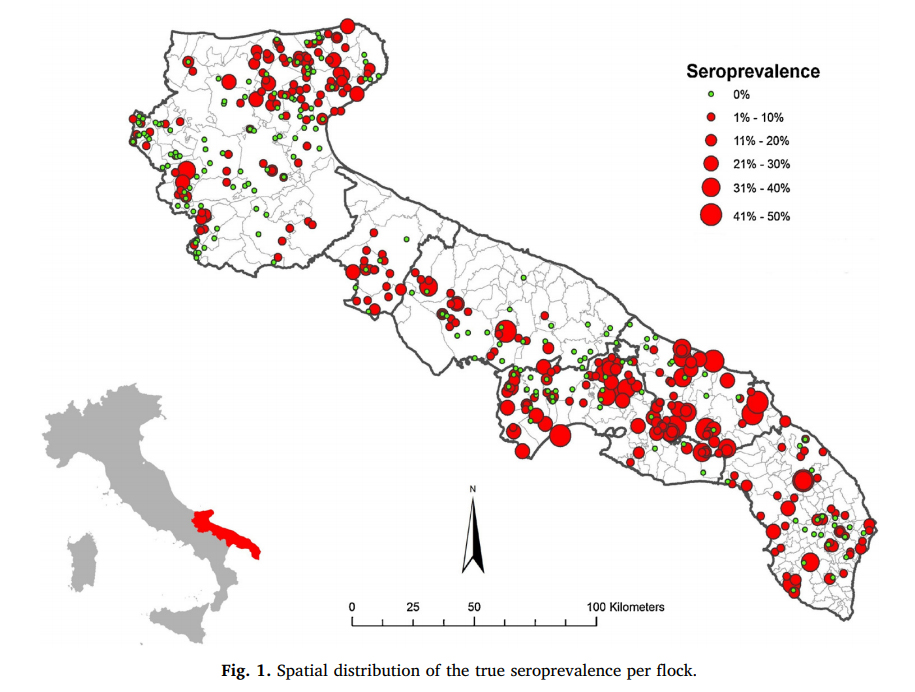Research Article
 F. Larussi and colleagues from the Experimental Zooprophylactic Institute of Apulia and Basilicata, Foggia, Italy and University of Barri, Italy reported a large study to investigate the prevalence of Johne’s disease in sheep and goat herds and the risk factors associated with being seropositive. This study was published in Small Ruminant Research August 2019. It used serum samples and the ELISA kit sold by ID-Vet- Innovative Diagnostics, France.
F. Larussi and colleagues from the Experimental Zooprophylactic Institute of Apulia and Basilicata, Foggia, Italy and University of Barri, Italy reported a large study to investigate the prevalence of Johne’s disease in sheep and goat herds and the risk factors associated with being seropositive. This study was published in Small Ruminant Research August 2019. It used serum samples and the ELISA kit sold by ID-Vet- Innovative Diagnostics, France.
Abstract: Paratuberculosis (PTB) is a well-documented chronic and sometimes fatal infection that affects the small intestine of ruminants both in captive and free-ranging living conditions. Although the infection has been detected on small ruminant farms worldwide, epidemiological and risk factor information regarding Mycobacterium avium subspecies paratuberculosis (MAP) infection on semi-extensive sheep and goat farms is generally still scarce, particularly in the Mediterranean area and in Italy. This paper reports the epidemiological findings and risk factors of the infection on semi-extensive sheep and goat farms in Apulia. It particularly focuses on the involvement of biological, structural and management factors, as well as the farmers’ socioeconomic data as predisposing causes of PTB, and investigates their possible connection with the survivability of the infection.
The true seroprevalence values of MAP on semi-extensive Apulian sheep and goat farms are reported and the risk factors causing the spread of infection analyzed. Data were collected through a two-year survey over the whole regional area, involving 419 farms, 16,903 sheep and 9369 goats. The epidemiological results showed a true seroprevalence of 66.2% for flocks and of 9.7% at the animal level. Analysis of the risk factors showed that the spread of infection occurs via several concomitant biological, managerial, and farmer-related factors.
The survey highlighted the need for urgent and suitable control plans providing guidelines to help Apulian farmers and their veterinarians contain and eliminate the disease, prevent biological risks for animal and humans as well as negative economic effects on the regional livestock sector.

Comment: This is a well-designed and executed study and one of the largest of its kind in sheep and goats. The study’s analysis of risk factors was particularly interesting and useful. The prevalence findings are similar to those of a survey if dairy sheep and dairy goats in Ontario Canada reported in The Canadian Veterinary Journal, February 2016. Unfortunately, neither the Italian study nor the Canadian study are open access article. Science Direct charges a fee of US$35.95 to purchase a PDF of the Italian article.